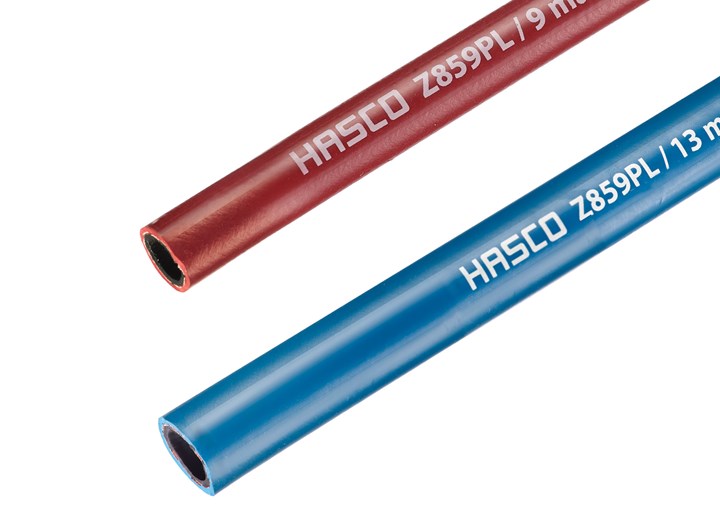Heating and Cooling Hose Line Expanded
Hasco’s Push-Lok hose system for fast and secure connection of heating and cooling circuits has been extended to include more options.
Hasco says its new Z859PL/… Push-Lok hoses were augmented specifically to further ease mold set up and tear down. Available in blue and red to clearly denote inlet and outlet lines, the hoses use what Hasco calls a “special material blend” to maximize service life of the flexible, twist-free and kink-resistant product. The hoses, which are temperature-resistant from -40 to 140 C (-40 to 284 F), allow quick repairs to be carried out directly on the workbench since additional hardware like hose clips and crimps are eliminated. An identification ring marks the end-point to ensure reliable mounting of the hose on the coupling. In addition to hoses, the system includes valve and valveless shut-off couplings in a 45° or 90° design, as well as hose-extension nipples for lengthening hoses and the new multi-coupling system. The company says the wide range of components allows customized heating/cooling system configuration.

Temperature resistant from -40 to 140 C (-40 to 284 F), Push-Lok hoses allow quick repairs, eliminating additional hardware like hose clips and crimps.
Photo Credit: Hasco
Related Content
-
Follow These Best Practices When Working With Heat Transfer Fluids
Effectively choosing, operating and maintaining thermal fluid can positively impact productivity in plastics processing.
-
Temperature Control Unit (TCU) Modulates Heat Output in Real Time
Delta T Systems’ Smart series water TCU features “Vari-Heat” technology for greater precision and efficiency.
-
Multicoupling Range Extended
Hasco‘s quick-connect system for multiple cooling circuits has added U.S., French and HT versions.





